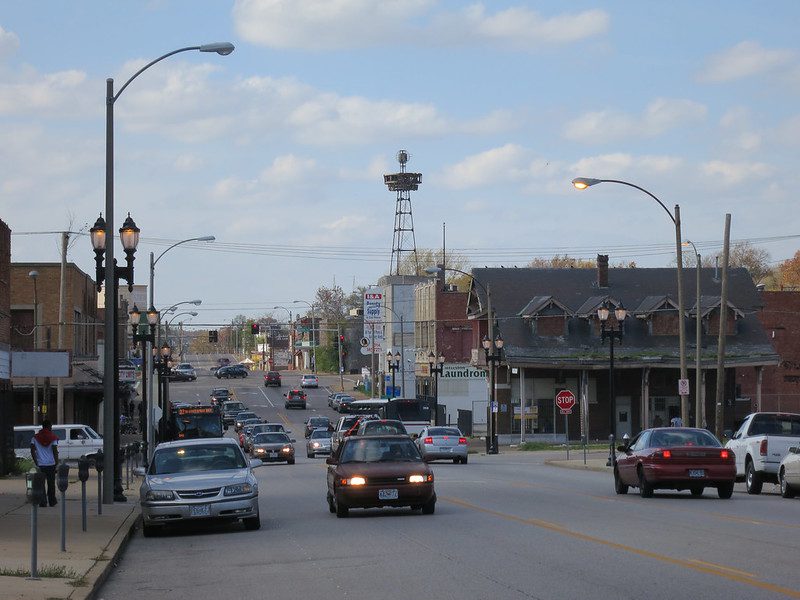Now it’s on! — woohoo! — between Barack Obama and John McCain, who has already morphed into McNasty.
A CBS poll on June 6 showed Obama six points ahead of McCain among registered voters. The accompanying story wondered how many Clinton voters would go over to the Republican side.
But what about not-yet-registered voters? Seems to me Obama’s got a lot of the voters who are not even voters yet.
I’m looking at you, Obama Girl!
So now, how to harness the energy, not to say adulation, of people who before this have rarely if ever been to the polls? Isn’t one of the reasons we’re stoked about Obama is that he engages people who have been kicked to the curb, people less inclined to vote than the older white people?
There’s the question for November: What kind of get-out-the-vote operation do Obama’s people have planned? I’m talking about the nuts-and-bolts stuff — like first identifying the people too poor, frazzled and disconnected from any civic benefits, then registering them and then babysitting heir kids and supplying a lift to the polls?
They’ve certainly got the notion — check out this vid from Obama’s Web site:
And I remember reading a New Yorker article — although damned if I can find it now, on-line or anywhere else — about the way Obama’s team worked the Iowa caucuses. They wore strings of beads to keep track of what delegates were eligible to be herded into the Obama camp, moving a bead from one side to the other as they clinched each support.
Seems they knew what they were doing.
An election here in Los Angeles got me thinking about those logistical things last Tuesday night.
The get-out-the-vote setup was crucial in the hotly contested race for an open seat on the Los Angeles County five-member Board of Supervisors.
Yeah, I know — LA Board of Supervisors — zzzzzz. Let me tell you that the population of LA County is over 10 million and the Board of Supervisors controls an annual budget of $22.5 billion.
We’re talking a small country here, people, with five elected officials in charge of all that money.
Anyway, the 2nd District seat opened up, nine candidates entered the race.
Only two have any big guns. They went to run-off. The two candidates are African-American men, although any similarity ends there.
One is labor’s pick and a civil-rights guy and the other is the business side’s darling and the former police chief of the Los Angeles Police Department, presently a Los Angeles City councilman.
The ex-chief, Bernard Parks, was pretty anti-reform during his tenure — bad idea, see Rodney King riots — and such a martinet that rank-and-file police organizations endorsed the civil-rights guy in this race for supervisor.
It’s my opinion the civil-rights guy, Mark Ridley-Thomas, would have been pounded if not for a crackin’ GOTV operation.
Ridley-Thomas ended up the top vote-getter, with 45 percent to his opponent Parks’ 39 percent, even though Ridley-Thomas’ name recognition was in the single-digits when he started. This even though he’s a current California state senator, former Los Angeles City Council member and, before that, director of the local Southern Christian Leadership Council.
Parks, on the other hand, started with huge name recognition as the former LAPD chief who rose through the ranks of a department that was majority white and notoriously resistant.
In 2003 then-Mayor Jim Hahn refused to renew Parks’ contract, in part because of the way he antagonized the rank-and-file and also because of a little thing called the “Rampart scandal” wherein the cops’ gang unit framed suspected gang members and planted evidence. That unfolded while Parks was chief.
Parks then successfully ran for City Council. In the race for the supervisor’s seat, Parks was boffo — with the business types and Magic Johnson and even Bill Cosby, plus endorsements from all the papers and ubiquitous television spots.
So you’d think he’d totally wipe the floor with his opponent, Ridley-Thomas. Think again. With nearly half the precincts reporting last Wednesday morning, Ridley-Thomas led with 47 percent — a few points short of the 50 percent-plus he needed to win outright. Parks got 36 percent.
Now the two must slog through to November.
Parks’ campaign outspent Ridley-Thomas’, although both raised around half a million, making it the most expensive supervisors race in LA County history.
But Ridley-Thomas benefited from an independent expenditure campaign funded with $4 million from unions like SEIU, who need an ally on the board of supervisors.
Now, $4 million is a lot of money. But they used it well to finance a very kick-ass GOTV operation that increased voter turnout in low-income, African-American and Latino communities in South LA.
Seasoned organizers used top-of-the-line technology that tracks a potential voter from the first time a volunteer knocks on the door to the time a voter needs a ride to the polls on election day to the moment she’s voted.
The organizing team recruited legions of volunteers, many from the unions financially supporting the GOTV effort. In many cases, people walked their own precincts in their own neighborhoods, rather than the conventional precinct-walking practice of parachuting into an unfamiliar neighborhood and spending undue amounts of time squatting on the curb squinting at little maps.
It’s pretty exciting to think of Obama, a former community organizer, in the White House. But his background also suggests that he understands the importance of this on-the-ground voter participation stuff, both as a practical matter and as a principle of including and enfranchising.
Can’t wait to see how it rolls out in real life during the coming months.





Comments